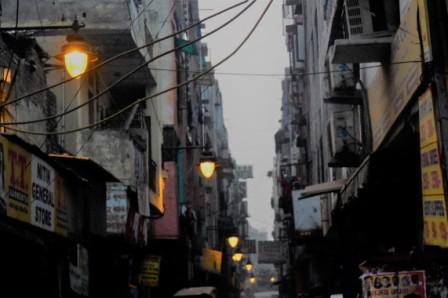COVID-19 has limited the scope of commute for most of us, who aren’t essential workers or those who cannot work from home. However, the problems from a pre-COVID world are likely to bounce back with the inception of a vaccine. Some of these problems include safety for women in terms of urban mobility – a grave problem that can possibly be solved with technology.
The discourse on women and their exclusion from public spaces has recently found voice in movements such as ‘Why Loiter?’ and ‘Meet to Sleep’. These movements encourage women to step out into public spaces and reclaim their right to inhabit them, and raise awareness towards the lack of accessibility and safety. In cities which have historically not included women in the workforce, it is important to understand the gaps in areas of transportation and other public amenities – such as streetlights, CCTV cameras and toilets, which inhibit women from participating in the economy.
Data in India from the National Sample Survey Office (NSSO) and Labour Bureau Employment Unemployment Survey (LB-EUS) shows the extent of the problem through statistics. For females, the workforce participation rate according to the NSSO was 25.5 % for women (as compared to 53.3 % for men) at the national level. The state which reflects the greatest female labour force participation rate (FLFPR) in India is Chhattisgarh, at 65% in 2014-2015 according to the LB-EUS. This has increased from 48% in 2011-12. However, other states such as Himachal Pradesh, Sikkim, Rajasthan, Chandigarh, Uttarakhand and Gujarat have shown a significant decline in FLFPR. With limited data to rely upon, especially given the problem of accounting for informal workers, there are a variety of reasons for this decline, which are discussed below.
Deeply entrenched in patriarchal norms and traditions, women in India face barriers in entering jobs and retaining them due to the violence and harassment they face in and around their workspace. This point has been highlighted by the International Labour Organization (ILO) in 2015, when it adopted Convention 190 (C-190) to empower trade unions, women’s rights groups, NGOs and national centres to end workplace violence and harassment.
Restricting women’s access to workspaces is problematic for various reasons – the most significant being that gender-based violence and harassment is inexcusable, and leads to atrocities against women. The 2012 Nirbhaya gang-rape case which sparked protests across the country happened within a private bus, and the goal is to monitor public and private transport so women are encouraged to become passengers.
Thus, it is necessary to understand how lack of security in transport, toilets, public roads etc. leads to decreasing employment opportunities for women. As with many other policy problems, technology can come to the rescue. How many of these technologies are accessible to informal workers is another concern. Though somewhat useful, these are the privileges enjoyed by a few. To democratise these technologies would mean inviting more women into the workforce.
There are wearable GPS-based devices which help women share their location and press a button in case of danger. Mobile apps such as Ola and Uber are becoming increasingly popular, albeit there have been complaints of misbehaviour even on these apps. Following such concerns, cab aggregators have designed SoS and other safety buttons on their platforms. More CCTV cameras on the streets also help women feel safer, but simultaneously raise larger questions of citizen privacy.
With technology, India has numerous solutions to enhance urban safety – but policymakers must always remember to focus on their flipside and ensure that privacy is not a trade-off.
Trisha Pande is the Policy Manager and Ayush Tripathi is the Project Associate at The Dialogue.
